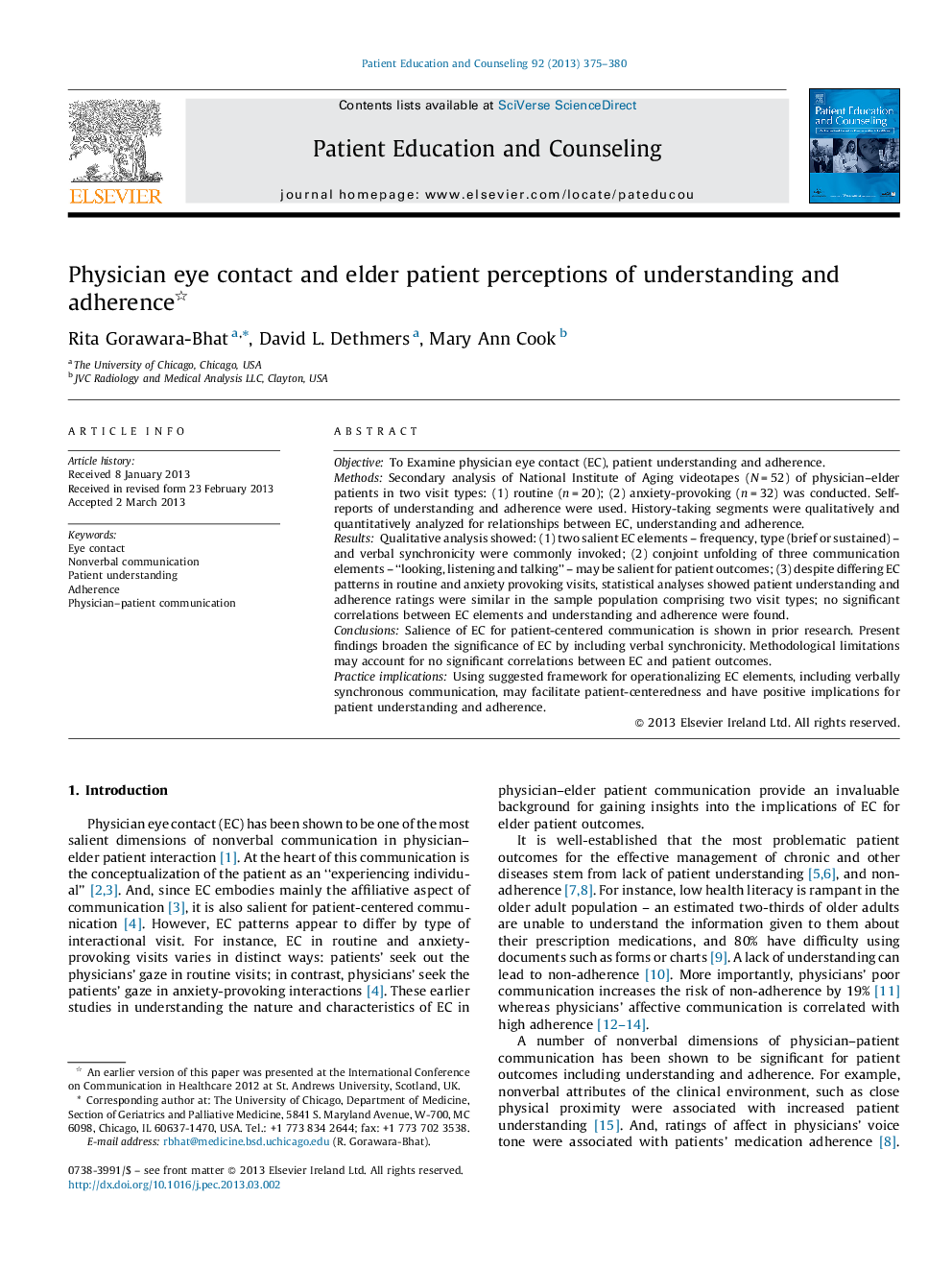| کد مقاله | کد نشریه | سال انتشار | مقاله انگلیسی | نسخه تمام متن |
|---|---|---|---|---|
| 3816189 | 1246176 | 2013 | 6 صفحه PDF | دانلود رایگان |

ObjectiveTo Examine physician eye contact (EC), patient understanding and adherence.MethodsSecondary analysis of National Institute of Aging videotapes (N = 52) of physician–elder patients in two visit types: (1) routine (n = 20); (2) anxiety-provoking (n = 32) was conducted. Self-reports of understanding and adherence were used. History-taking segments were qualitatively and quantitatively analyzed for relationships between EC, understanding and adherence.ResultsQualitative analysis showed: (1) two salient EC elements – frequency, type (brief or sustained) – and verbal synchronicity were commonly invoked; (2) conjoint unfolding of three communication elements – “looking, listening and talking” – may be salient for patient outcomes; (3) despite differing EC patterns in routine and anxiety provoking visits, statistical analyses showed patient understanding and adherence ratings were similar in the sample population comprising two visit types; no significant correlations between EC elements and understanding and adherence were found.ConclusionsSalience of EC for patient-centered communication is shown in prior research. Present findings broaden the significance of EC by including verbal synchronicity. Methodological limitations may account for no significant correlations between EC and patient outcomes.Practice implicationsUsing suggested framework for operationalizing EC elements, including verbally synchronous communication, may facilitate patient-centeredness and have positive implications for patient understanding and adherence.
Journal: Patient Education and Counseling - Volume 92, Issue 3, September 2013, Pages 375–380